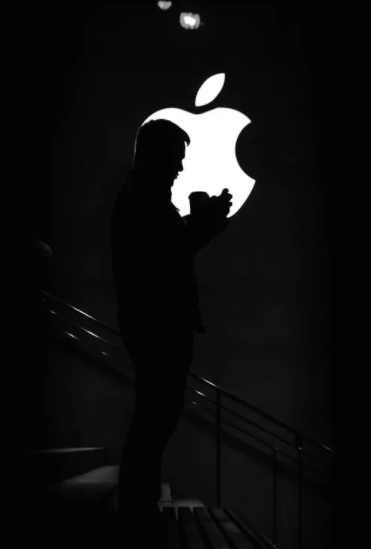Technology is developing at a rapid pace these days, with just one smartphone doing the work of several devices. Most phone users now have smartphones and probably can’t imagine their lives without it. However, many of us may not know the kinds of devices and technology that eventually led to the advent of these ubiquitous smartphones.
Of course, some initial devices that gave us new technology also had to fail in order to give rise to better, more advanced options. One of the best examples of these is the Apple Newton. While this device was technically a flop, it was instrumental in bringing about new technology, helping its company see what was required, and the eventual rise of the iPhone. Let’s now have a closer look at the Apple Newton, its history, and what it meant for modern technology.
The Newton Series
The Newton was a series of PDAs or personal digital assistants. These devices were both developed and distributed by Apple Computer, Inc. from around 187 to 1998. It was among the first devices, perhaps the very first, to have handwriting recognition. In fact, it was the Newton that originated the term “PDA”.
The Start of Apple Newton
The Apple Newton platform’s development started in 1987, though the first devices from the series wouldn’t be shopped until August 1993. The production of the devices went on until February 27th, 1998, when it was officially stopped. The Apple Newton had its own operating system, which was named the Newton OS. This system wasn’t just for these PDA devices; the Newton OS was also running other Apple products such as the eMate300 and the MessagePad series. These were all known as part of the Newton series. Most of these devices also had the ARM 610 RISC processor.
Apple announced the Newton device to the public in 1993. Its designation, that of a Personal Digital Assistant, was coined by John Scully. Scully was the CEO of Apple at the time. The Apple Newton was marketing as a device that can take notes for its owner, store their contacts, and also manage calendars. It can also be used to send faxes and convert handwriting into text on the screen. These might seem like very basic features now, but they were quite revolutionary in 1993.
Why Did the Apple Newton Fail?
With its proprietary operating system and then-innovative technology, it might seem strange that the Apple Newton effectively failed to capture the masses. There wasn’t any one reason for this; most sources speculate that it might have been several factors coming together that led to the quick demise of this Apple product. These include the following:
- The price of the Apple Newton was very high (the concept of paying top dollar for the latest Apple technology was not quite established yet)
- The handwriting recognition software was there, but it had problems early on
- There were a lot of competing devices that offered similar features
- The competition meant that Apple may have released their offering a bit prematurely, without ensuring that all its functions were working properly
- It only had around 140 kb of storage, which was extremely limited even for the early 90s and 2000s.
There are several other factors for the failure of the Apple Newton device and its eventual discontinuation by Steve Jobs. This occurred in 1998, just a year after Jobs had returned to Apple.
The Intent Behind the Apple Newton
By creating and supplying the Newton, Apple intended to start off a completely new category of computers. Their goal was to make a computer that anyone could simply slip into their pocket when on the go. The device was to become convenient and useful enough that people would use it for several work and social roles.
Newton users were also theoretically able to load any other programs that required by linking the device to a Mac computer. However, Apple limited this feature while launching the Newtons. The storage space was laughably limited, as mentioned above. However, Apple did sell flashcards with 1 MB, 2 MB, or 4MB of space that one could plus into an Apple Newton. What’s ironic here is that the same feature will come in really handy for modern iPhones and iPads, but it’s not available now.
The Various Issues in the Apple Newton
Apple may have been the first to announce a PDA device, but their competitors lost no time in coming up with their own devices. This was right after Apple announced its Newton plans. The result was that Apple had to speed up its production and release plans. While the Newtons they released were functioning, here are a few details of the problems they presented:
1. Poor Working For the Handwriting Recognition
The feature of recognizing handwritten and turning it into digitized text was to be the most unique and useful feature for Apple Newton. However, the software that Apple used wasn’t really up to the mark. It often translated the words into something weird, random, or downright embarrassing.
Most tech critics viewed this problematic feature with derision. Doonesbury, a comic strip, even mocked the device for a full week. There was also a parody of it in the animated series ‘The Simpsons’.
Eventually, the Apple Newton software’s wrinkles were ironed out and it became much better within a few years. However, the damage was done and the image of the product was already damaged. Since the debut performance was so problematic, people were hesitant to try out the device further on as well.
2. Pricing Strategy Issues
The Apple Newton was available in three models, all with different prices. None of them were in an affordable price range. The Senior model measured 9 by 12 inches and had a price tag of $5,000. The midsize was 6 by 9 inches and cost a little less than $2,000. The smallest Junior model measured 4.5 by 7 inches with a price of $500.
With these prices, you also had to take into account the performance issues of the initial Apple Newton devices. Basically, Apple was asking its potential customers to pay top dollar for a slightly enhanced notepad. At the same time, Steve Jobs was creating the Next computer that has an estimated starting price of $10,000. This also seemed like an exorbitant cost, especially since there was no cross platform app development yet.
3. Low Performance on the Market
In the first few months after the release of Apple Newton, only around 50,000 Newtons were sold. This was a problem for the company, as Apple wanted Newton to be its next major revenue stream. It also viewed the Newton as being a worthy rival for the Macintosh and the Apple II. Instead of these glorious goals, the Newton was more like fodder for 90s memes.
4. Jobs’ Adversity to the Device
Steve Jobs did not like the Apple Newton. There are a few reasons why he simply hated the device; its poor performance and being the innovation of John Scully. In 1985, the Apple board had favored Scully against Jobs, leading the latter to leave the company.
Yet another reason why Jobs was not warming up to the Apple Newton was the stylus input. According to him, almost everyone had ten styluses, meaning our fingers. When Jobs was back in control of Apple, he soon put an end to the whole Newton series saying that the company had a lot of projects ongoing already.
While Jobs did discontinue the Newton line, he did hold on to certain aspects of the ideas and technology that made these devices. As we now know, he was successful in making much more useful, trendy, and high-performing devices. Just a glance at the Apple watch tricks is enough to show us how much technology has advanced since the Apple Newton.
Did the Newton Influence Technology Today?
While the once-innovative offering of the Apple Newton didn’t last for long or see much success, it still had a viable idea behind it. The promises of convenience and high portability might never have been fulfilled by this device, but the thinking that led to it then led to more advanced devices.
The thinking and logic of the Newton–to have your computer on your person at all times–was first carried on in the advent of the Palm Pilot. This then inspired the Windows tablet and eventually initial smartphones such as the Blackberry. After that, the iPhone and other modern smartphones came into being.
Conclusion
Apple Newtons might still be regarded as an important step in the creation and evolution of smartphones. Without the idea and the technology, our phone might have looked very different today. For those who love vintage tech, there are still some Apple Newtons available for purchase out there. These may not be available at regal Apple stores, but one can probably buy some secondhand devices on third-party platforms like eBay or Amazon. People who are interested in new uses for old smartphones may also find something of interest in any model of the Apple Newton today.








